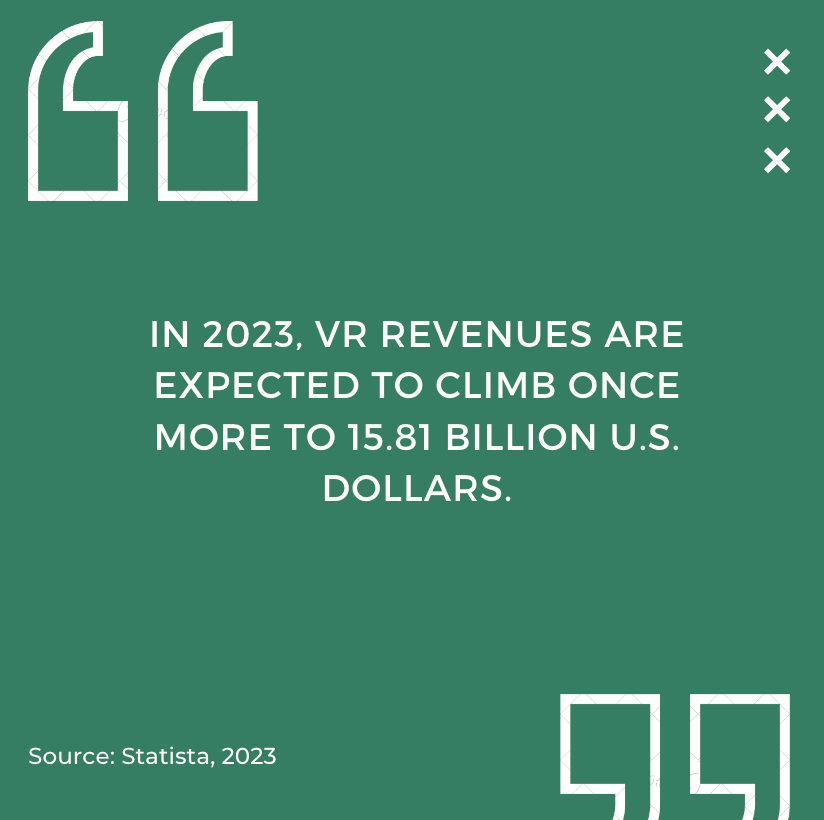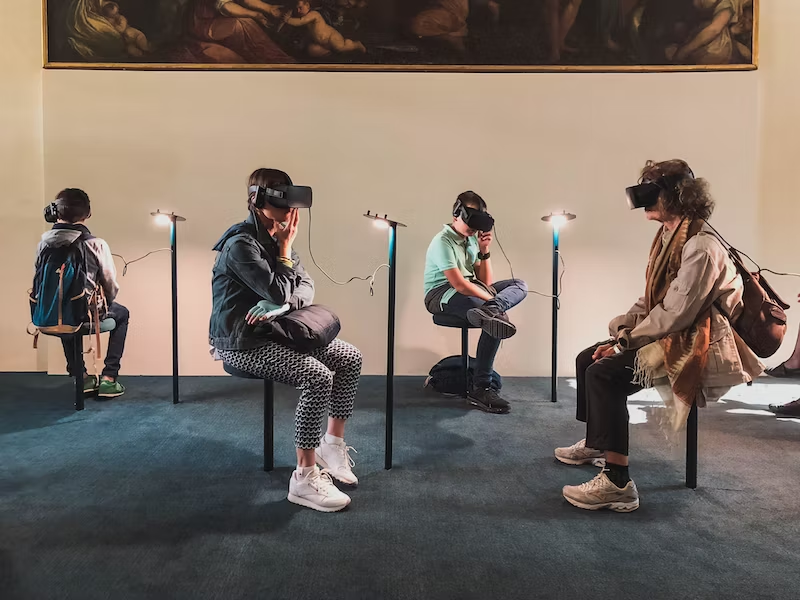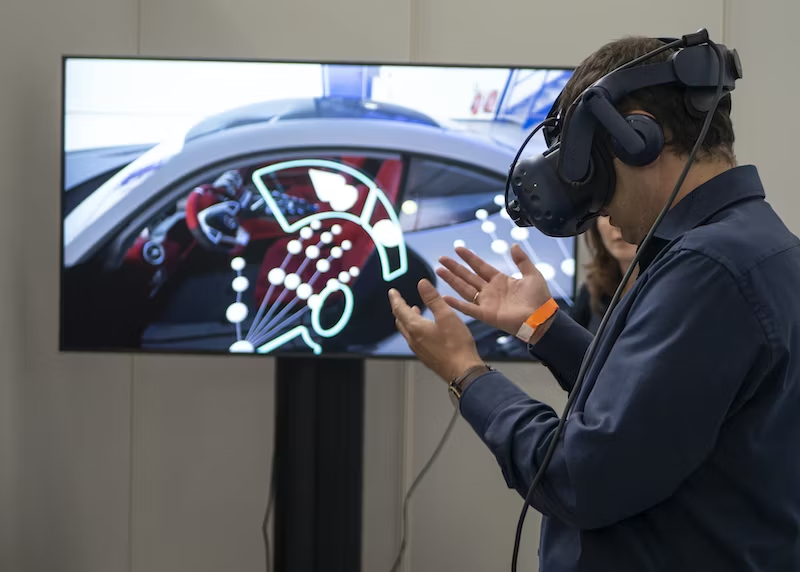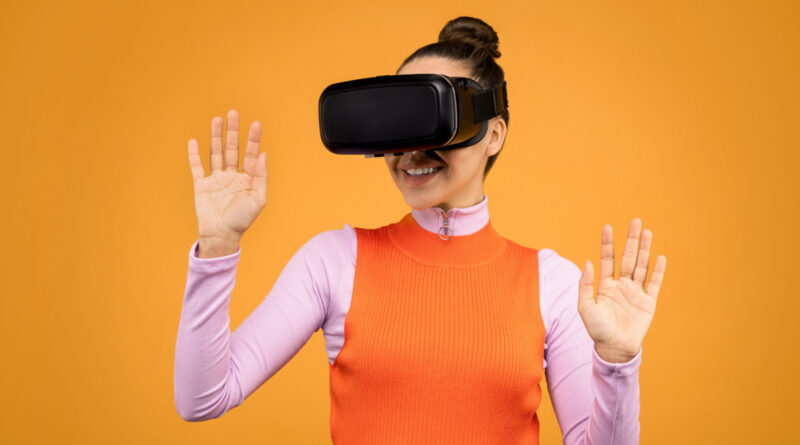The Role of AR and VR in eCommerce Transformation
If you want to be the next great thing in online shopping, it is crucial to think about what makes you stand out from your competitors.
How exactly do you establish a strong point of difference is the key question. To find the answer, companies are using augmented reality (AR) and virtual reality (VR).
These innovations might help you stand out from the competition and draw in new clients for your company. Consumers’ lives are already becoming easier thanks to virtual reality in e-commerce. Companies that make these investments will be able to offer superior customer service. Increasing sales and customer loyalty will result in improved revenue from the investment.
What is augmented reality (AR)?
By incorporating virtual aspects into actual environments, augmented reality (AR) technologies improve user engagement with apps and platforms.
The value of AR on a global scale was $16.92 billion in 2021, and it is anticipated to reach $105.67 billion by 2028.

Although initially connected to online purchasing, augmented reality is now being employed more frequently in physical stores and offline activations.
Thanks to augmented reality capabilities, customers can now learn more about products and immerse themselves in the brand’s narrative. These resources assist companies in meeting consumer demands for a more interesting and interactive purchasing experience.
What is VR?
Users can engage in 3D interaction with a simulated digital environment using virtual reality (VR). A VR headset, or head-mounted display, makes virtual reality experiences realistic.
Virtual reality has many potential uses, but online gaming is where it is most frequently used. It can aid in the study of ancient cultures, the practice of surgery by doctors, and the preparation of soldiers for hazardous war situations. As you might expect, it also has a variety of uses in both retail and e-commerce.
In 2022, the aggregate revenue from VR products for enterprises and consumers was $11.97 billion. Profits from VR are expected to reach $15.81 billion in 2023.

How does augmented reality (AR) differ from virtual reality (VR)?
Contrary to augmented reality, which incorporates digital features into the real world, virtual reality uses a headset to create an entirely simulated experience. While VR immerses users in a different realm, AR experiences attempt to enhance the existing world.
Because it does not require the same gear or safety precautions, augmented reality is more accessible than virtual reality in e-commerce. With only a smartphone and an app often needed, AR experiences are simpler for businesses to develop. Using the best digital business card instead of a paper-based card is fairly similar to it in terms of simplicity.
The Role of AR and VR in eCommerce
Augmented Reality (AR) in eCommerce: Enhancing the Real World
Augmented reality in eCommerce has become a ground-breaking technology. It combines the physical and digital worlds to give customers a rich and engaging shopping experience.
Here are some ways that AR is having a big impact:
- Virtual Try-Ons: AR has a significant impact on the eCommerce of beauty and fashion. Customers may imagine how clothing, accessories, or cosmetics would appear on them without physically trying them on, thanks to virtual try-on solutions. By reducing ambiguity, enhancing consumer confidence, and reducing the need for returns, this technology ultimately improves customer pleasure.
- Product Visualization: AR is excellent at enhancing the product discovery process. Consumers can use their smartphones to project 3D product models onto their surroundings in real life. The decision-making process is improved by this feature, which enables consumers to evaluate elements like size, fit, and style compatibility with their surroundings.
- Interactive Product Information: AR offers a dynamic and interesting approach to obtain product information. Customers can access in-depth information, user reviews, and instructional videos by scanning labels or photographs with their cellphones. Customers are empowered to make informed decisions because of this access to thorough product information.
- Enhancing In-Store Shopping: AR doesn’t just apply to online shopping. Smartphone AR apps can give customers more details about products in actual stores, help them find their way around the space, and even let them access special offers or content.
- Brand Storytelling: Businesses are using augmented reality to deliver engrossing tales about their goods. Consumers can be immersed in brand storylines through interactive augmented reality (AR) experiences, creating stronger emotional bonds and promoting brand loyalty. The purchasing experience gains an additional layer of brand authenticity thanks to AR-powered brand storytelling, much like using the right domain names.

Successful eCommerce marketplaces are starting to include augmented reality (AR) technology as it continues to advance and become more widely available. AR is changing how customers interact with products and companies by enriching the real world with virtual aspects.
By integrating augmented reality, eCommerce companies are well-positioned to prosper in a time when customers place a premium on immersive experiences. It should be noted that remote access software for tech support can assist in troubleshooting and resolving any software issues clients or staff may experience with this technology.
VR in eCommerce: Immersive Shopping Experiences
By immersing consumers in wholly virtual surroundings, virtual reality elevates the eCommerce experience. Although not as common in eCommerce as AR, VR has several distinctive applications.
- Virtual Storefronts: Imagine entering a virtual shopping center from the comfort of your home, complete with virtual storefronts. Using VR, merchants can digitally reproduce actual shop layouts, including aisles, shelves, and product displays. With VR headsets, customers may navigate these virtual storefronts, creating a sense of familiarity similar to physical shopping.
- Showcasing Luxury and High-Value Items: VR excels at showcasing expensive or complicated things. Customers may study each detail of anything using virtual reality, including luxury cars and real estate.
- Immersive Product Demonstrations: Virtual reality (VR) offers a solution for products that benefit from user interaction. Customers can test the features and functionalities of goods virtually by interacting with them in a three-dimensional environment. By bridging the gap between the online and offline worlds, this lowers uncertainty and boosts consumer confidence in purchases.

- Virtual Events and Launches: Virtual reality (VR) extends beyond only online shopping and may be used to create virtual settings for events and product launches. Think of this as the in-person version of using a remote desktop. Consumers can watch high-end events, fashion presentations, or product debuts from the comfort of their immersive VR settings.
- Personalized Shopping Environments: By customizing the virtual environment to each shopper’s tastes, VR can tailor the buying experience. The overall purchasing experience is improved by this degree of customization, which makes it more enjoyable and satisfying.
Virtual reality still has a plethora of potential uses in online commerce. Although it is now less widely used than Augmented Reality (AR), it provides a glimpse into what internet shopping may look like in the future.
VR stands out as a disruptive force in eCommerce because it can take customers to interactive, digital realms and create remarkable purchasing experiences. Companies that adopt VR are not only staying ahead of the curve, but they are also revolutionizing online shopping by giving customers access to previously inconceivable experiences.
Case Studies of AR and VR in eCommerce
AR and VR are part of a long list of innovative tools, such as business PBX systems, that enhance business processes. Here are some case studies of AR and VR in ecommerce.
Case Study 1: IKEA’s AR Furniture Shopping
Background:
IKEA, the global furniture retail giant, recognized the challenge of customers visualizing how furniture would fit and look in their homes before purchasing. IKEA released the augmented reality software IKEA Place to address this problem.
Implementation:
IKEA Place utilizes AR technology to enable customers to virtually place IKEA furniture in their homes using their smartphones or tablets. Users can browse IKEA’s extensive catalog, select a product, and point their device’s camera to see the selected furniture item integrated into their living spaces in real time.
Results:
- Enhanced Customer Experience: IKEA’s AR app offers a highly immersive and interactive shopping experience. Customers can confidently select furniture that complements their existing decor and fits their space.
- Reduced Returns: By allowing customers to visualize products in their homes, IKEA Place has significantly reduced the number of returns due to mismatched sizes or styles.
- Increased Sales: As a result of the app, sales have grown as consumers feel more safe making purchases.
Case Study 2: Alibaba’s Virtual Reality Shopping
Background:
After building a robust online store, the Chinese eCommerce giant sought to offer customers a remarkable purchasing experience. They introduced Buy+ (also known as Taobao Buy+), a VR shopping platform.
Implementation:
Buy+ immerses users in a virtual mall where they can explore products and shops. Users wear VR headsets and can navigate through the virtual shopping center. They can also view products in 3D, receive product details, and make purchases directly within the VR environment.
Results:
- Unique Shopping Experience: Alibaba’s VR shopping offers customers who are looking for a unique and fun shopping experience a new and enjoyable way to shop.
- Increased Engagement: Users spend more time on the platform, leading to increased user engagement and interaction with products.
- Cross-Border Shopping: Buy+ allows international customers to virtually visit Chinese malls and shop for products, opening up new markets for Alibaba.
These case studies show how AR and VR technologies can revolutionize the eCommerce industry. They can foster growth and innovation in addition to improving the client experience.
Join the Movement
Augmented Reality (AR) and Virtual Reality (VR) are powerful tools that can transform your business. Using these innovative technologies will help you stand out in a market that is getting more and more crowded. Remember to innovate and incorporate these technologies when you construct your online business because they will undoubtedly define the future of eCommerce.
Yan Anderson is the Head of Content Marketing at CS-Cart with over 10 years of experience in the eCommerce industry. He's passionate about explaining complicated things in simple terms. Yan has expertise in building, running and growing eCommerce marketplaces. He loves to educate people about best practices, new technologies, and trends in the global eCommerce industry.

